-
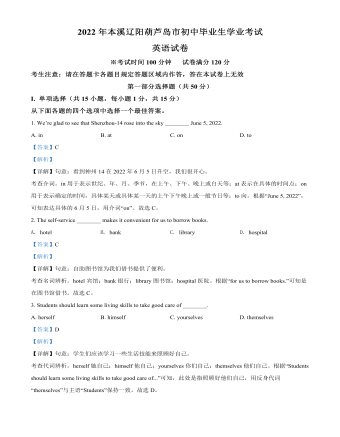
2022年辽宁省本溪市、辽阳市、葫芦岛市中考英语真题(解析版)
A bird went to look for happiness. On ___21___ way, she saw a flower, the flower was short ofwater, but his face was full of ___22___ .
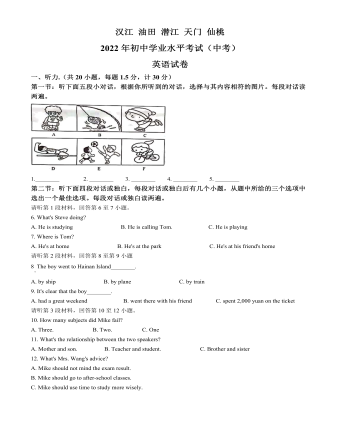
2022年湖北省江汉油田、潜江、天门、仙桃中考英语真题(解析版)
Penny’s family was very poor. Her father was asailor (水手).He earned very little money and was ____16____ away from home. Her mothercould not work ____17____she was often sick. One day.
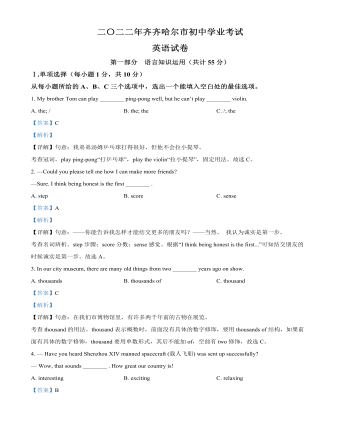
2022年黑龙江省齐齐哈尔市中考英语真题(解析版)
B: For 3 days. I expect togo there again.A: Lucky you. I had to stayat home. But I’m planning to travel to Mount Changbai.B: Oh, that’s a good place.I went there three years ago.

2022年山西省中考语文真题
王某曰:古之学者,虽问以口而其传以心虽听以耳而其受以意。故为师者不烦,而学者有得也。孔子曰:“不愤不启,不悱①不发,举一隅②不以三隅反,则不复也。”夫孔子岂敢爱其道,骜③天下之学者,而不使其蚤④有知乎!以谓其问之不切,则其听之不专;其思之不深,则其取之不固。不专不固,而可以入者,口耳而已矣。吾所以教者,非将善其口耳也。
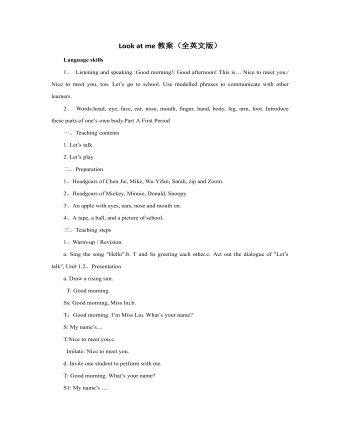
人教版新课标PEP小学英语三年级上册Look at me教案(全英文版)
3、Practicea. Nice to meet you. Nice to meet you,too.b. Perform the dialogue.c. Arrange the dialogue according to the pictures or sentence cards.d. Let’s play.A: Good afternoon,B. This is C. Hello, C! Nice to meet you.C: Nice to meet you, too.A,B: Goodbye!C: Bye!4、Assessment Workbook page 10Add-activitiesa. Listen to the recording and repeat.b. Make a dialogue according to "Let’s talk".Second Period一、Teaching contents1. Let’s learn Words:body, leg, arm, hand, finger, foot.1. Let’s do二、Preparation1、a puppet2、Cards of body, leg, arm, hand, finger and foot.3、headgear of a captain三、Teaching steps1、Warm-up/ Revisiona. Captain says to review "let’s do" of Part A.b. Perform the students their own dialogues.2、Presentationa. Learn to say "body, leg, arm, hand, finger and foot."b. Listen to the recording and repeat.c. Let’s do. Clap your hands. Snap your fingers. Wave your arms. Cross your legs. Shake your body. Stamp your foot.3、Practicea. Let’s draw a person.b. Let’s do. Point out which picture.c. Let’s do. Who responses faster.4、Assessment Workbook page 115、Add-activitiesa. Listen to the recording, repeat and act out.b. Say all the names of the body to your parents.Third Period一、Teaching contents1. Let’s check2. Let’s chant二、Preparation1、stationeries1、pictures of parts of Zoom
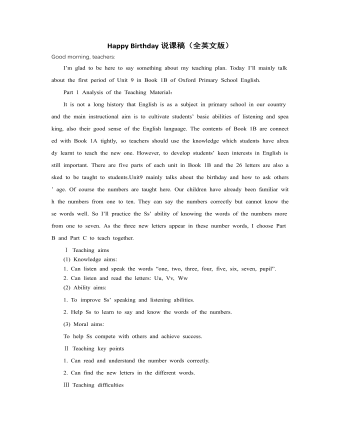
人教版新课标PEP小学英语三年级上册Happy Birthday(全英文版)说课稿
1. Do some exercise on the paper. There are four kinds of exercise here. The exercise 1 is to develop Ss’ ability of listening. Exercise 2 is to practice Ss’ ability of knowing the words. Exercise 3 is to develop Ss’ ability of speaking numbers and letters. Exercise 4 is to make Ss know the words and letters well. These exercises can consolidate the new knowledge from different styles of problems.2. Then tell Ss that we can sing the numbers like “ Do, re, mi, fa, so, la, ti, do” and let them listen to a song named “Do, Re, Mi”. Add some extra knowledge so that Ss will be glad to see that the numbers can be used in another way.Step 4 Homework1.Read the numbers from 1 to 7 and 7 to 1 five times.2.Read the letters “u, v, w” five times follow the tape.Reading is a useful way for the Ss of Grade One to practice the knowledge. Ask Ss to imitate reading from the tape in order to make Ss have a good habit of listening and let them have a better pronunciation.Step 5 Board writingI ‘ll put the seven numbers like a scale(音阶)as I’ll let Ss know that we can sing out the numbers. When it comes to listen to the song, I ‘ll draw a musical note on Bb. Unit 9 Happy birthday!sevensixfivefourthree U u V v W wtwo pupil five windowoneThat’s all for my class designing. Thank you for listening!
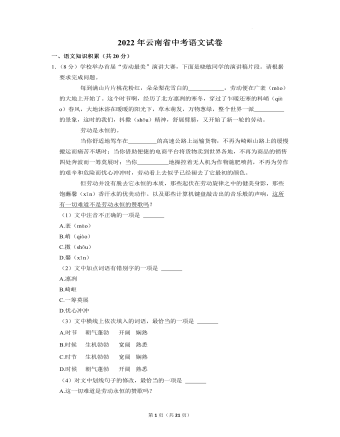
2022年云南省中考语文试卷
环滁皆山也。其西南诸峰,林壑尤美,望之蔚然而深秀者,琅琊也。山行六七里,渐闻水声潺潺,而泻出于两峰之间者,酿泉也。峰回路转,有亭翼然临于泉上者,醉翁亭也。作亭者谁?山之僧智仙也,名之者谁?太守自谓也。太守与客来饮于此,饮少辄醉,而年又最高,故自号曰醉翁也,醉翁之意不在酒,在乎山水之间也,山水之乐,得之心而寓之酒也。
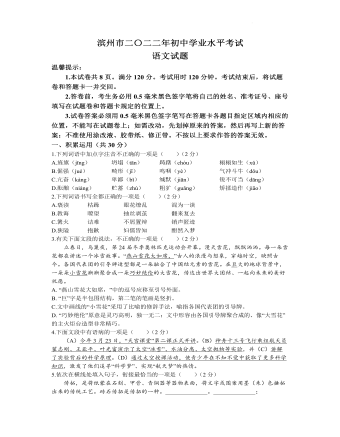
2022年山东省滨州市中考语文真题
【甲】大道之行也,天下为公。选贤与能,讲信修睦。故人不独亲其亲,不独子其子,使老有所终,壮有所用,幼有所长,矜、寡、孤、独、废疾者皆有所养,男有分,女有归。货恶其弃于地也,不必藏于己;力恶其不出于身也,不必为己。是故谋闭而不兴,盗窃乱贼而不作,故外户而不闭。是谓大同。
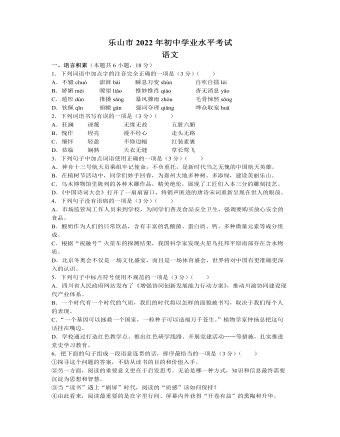
2022年四川省乐山市中考语文真题
中华民族拥有5000多年灿烂文明。弘扬中华美育精神,用美育涵养“美丽心灵”,不妨从教育引导年轻人热爱艺术开始。年轻人通过认识和理解中华大地上的优秀艺术作品,可以形成开阔的视野和包容的心态,增强文化自觉和文化自信。引导年轻人接近、欣赏中国文艺作品之美,有助于赓续优秀文化传统,增强做中国人的志气、骨气、底气。
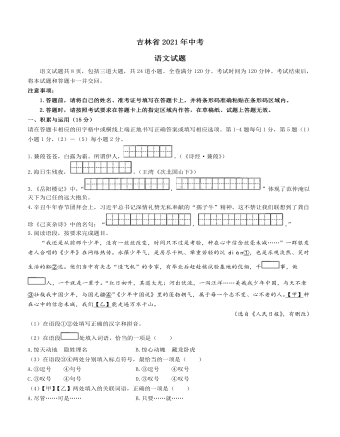
2021年吉林省中考语文真题(答案版)
出佛手园,远处有山,山中有岚,有云。岚清,云白,绸缎一般,棉花一般,曼妙而行,逍遥自在。除了爱,还有眼前这山川草木。小小人类身处自然,永不孤单。那些草木,那些动物,那些自然界中的生灵,各安其所,相处自洽。而人类,不免焦虑,屡屡焦虑,内在小宇宙紊乱,何不走到自然中,谦卑蹲下,去学习一株草、一颗露珠的宁静?
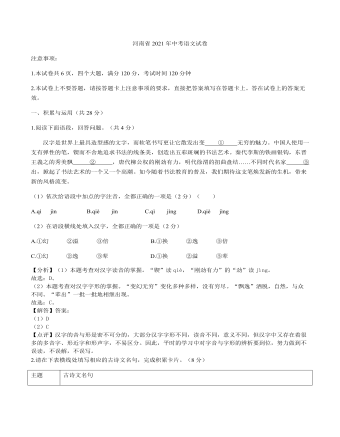
2021年河南省中考语文真题(解析版)
班长立刻组织抢修舵链,这才发现,几乎不可能。修舵链要从船头的铁柱处下去,可甲板到船头的舱盖上结了厚冰,舱盖是拱形的,十多米长。平时,船一晃,在上面走都很难。现在结了冰,站都站不住,根本别想走过去。班长看着结冰的舱盖请示陪同的马参谋长:“参谋长,过不过?”“怎么过?”“爬!”“多大把握?”“没有。”马参谋长认真看了看班长,重重拍了他一下。
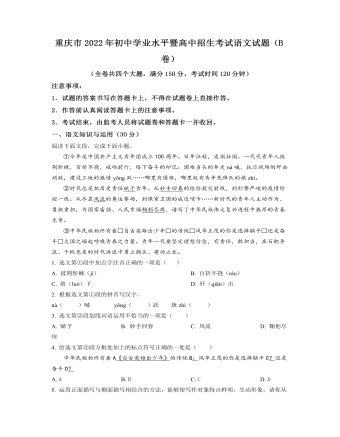
2022年重庆市中考语文试卷(B)及答案
在厨房蒸馒头的母亲,揭开锅盖高兴地说到:“馒头笑了。”我没看出来,就问她怎么笑的。母亲说:“就是馒头开口了,过年了,讨个吉利,所以要说笑了才行。”
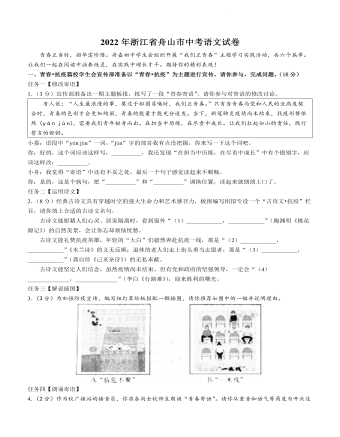
2022年浙江省舟山市中考语文试卷
生平所见之友,以穷以老而遂于衰颓者,十居七八。赤豹②,君子也,久居江东,得无有陨获③之叹乎?昔在泽州,得拙诗,深有所感,复书曰:“老则息矣,能无倦哉?”此言非也。夫子“归与归与”④,未尝一日忘天下也。故君子之学,死而后已。
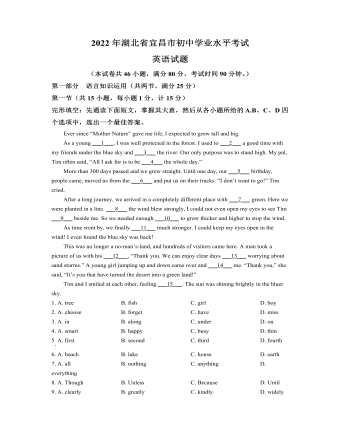
2022年湖北省宜昌市中考英语试题(解析版)
Duringwork hours in Becker’s bread shop, the kitchen is especially quiet except thesound of the machine. The quiet environment is not the result of the strictrules, but because all the workers are deaf. They use sign language tocommunicate with each other from time to time.
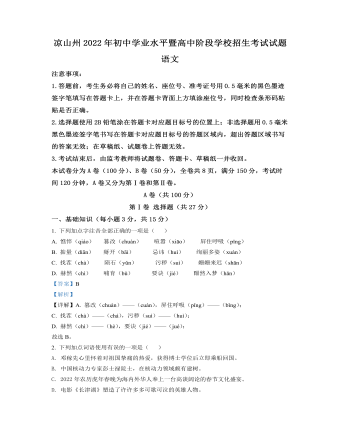
2022年四川省凉山州中考语文真题(解析版)
5000多年源远流长的文明历史中,中华民族始终有着“自古英雄出少年”的传统,始终有着“长江后浪推前浪”的情怀。一百年前,共青团成立之际,一大批先进青年在“觉醒年代”纷纷觉醒。新时代建设中,哪里有需要,哪里就有青年的身影:在抢险救灾前线冲锋陷阵,在疫情防控一线披甲出征,在平凡的岗位上兢兢业业,在美丽的校园里不懈奋斗……“清澈的爱,只为中国”,成为当代中国青年发自内心的最强音。
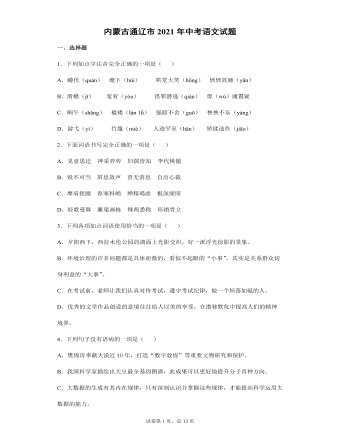
2021年内蒙古通辽市中考语文真题(解析版)
妈妈19岁嫁给爸爸。外婆生育了6个孩子,还领养了一个,但妈妈是唯一的女儿,在那个年代,虽然说不上能享受到多少宠爱,但至少没有遭受过任何对女性的轻慢,妈妈甚至还念到初中毕业,字写得比我还好,能自由阅读文学作品。
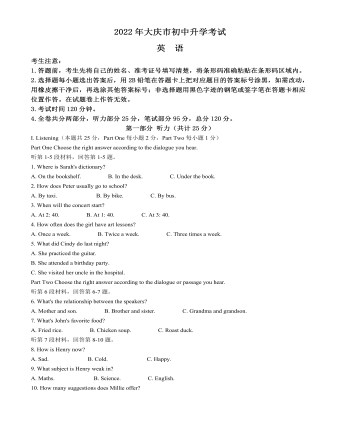
2022年黑龙江省大庆市中考英语试题(解析版)
On a snowy day, there was a man walking in ahurry on the road. His clothes were in poor condition. You might think he was abeggar(乞丐),but in fact he was a painter. His name was Vincent Willem van Gogh.
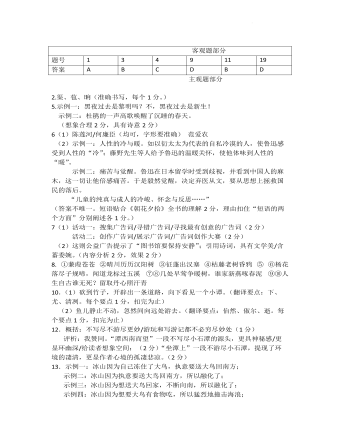
2022重庆中考语文A卷答案
作者通过举例,更具体地说明了“自下而上找结构”的方法;/作者分步骤,更为清晰地讲解了如何从庞杂信息中找到结构;/作者通过高度概括(提炼观点),使读者更为快速地了解从庞杂信息中找到结构的方法。
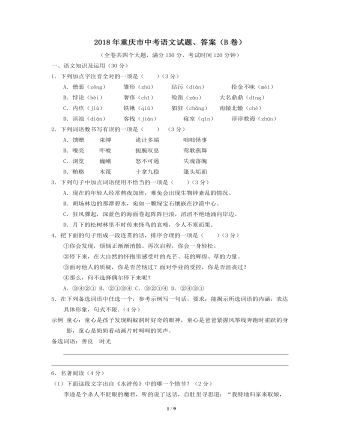
2018年重庆市中考语文试卷(B)及答案
从这个角度望出去,拇指和食指框住的镜头里,左边是小区里栉比的高楼,右边是起伏的群峰,刚下了一些小雪,灰秃秃的山顶上,多了些白色的点缀。好一幅美丽的水墨素描!小翠陶醉在这美丽的风景中。
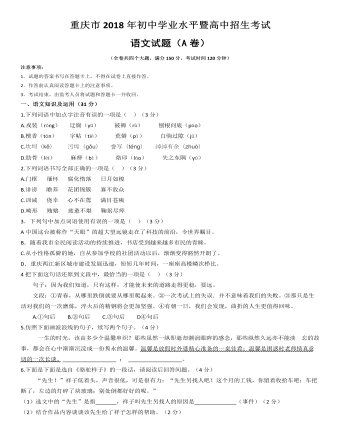
2018年重庆市中考语文试卷(A)及答案
好景不长,真应了儿媳的那句话,孩子患有先天性心脏病,得赶紧做手术。王婆婆摸了摸缝在贴身衣兜里的两千块钱,这可是她这些年来起早贪黑拾荒换来的棺材钱啊!可一看到孩子那清澈的眼神,她心一横牙一咬,撕开了衣兜,双手颤抖着揭开一个用塑料布一层又一层包裹着的小袋子,就像一层层剥开自己的心。





















